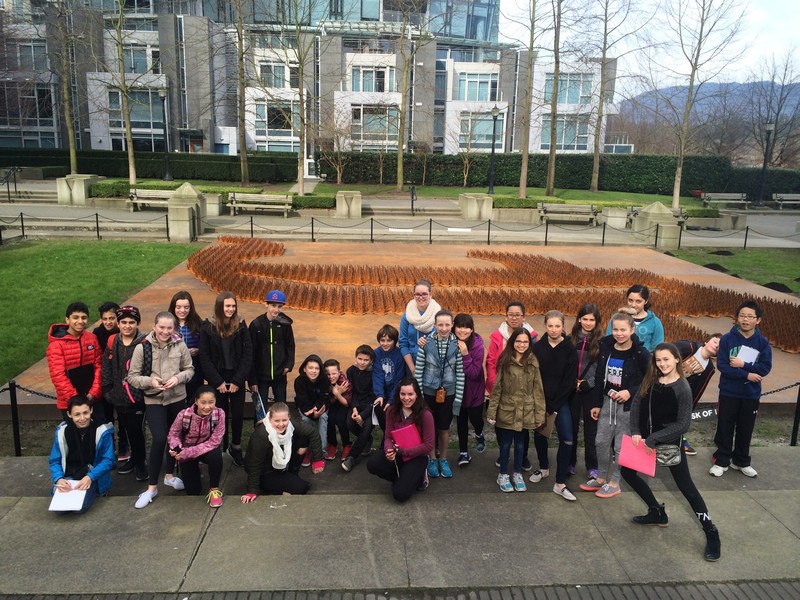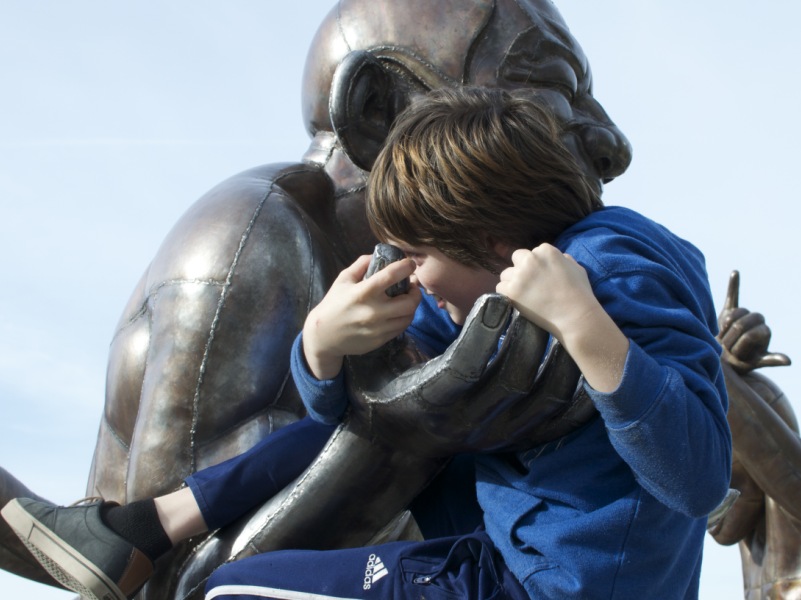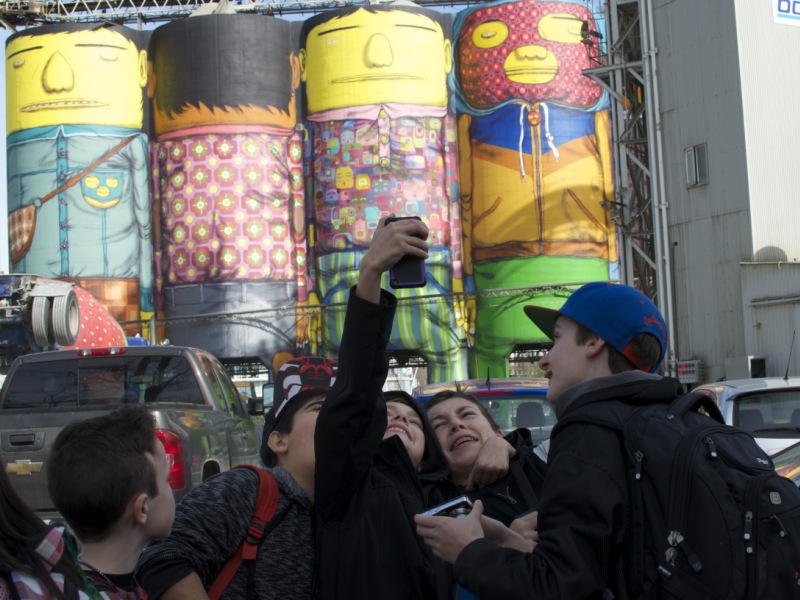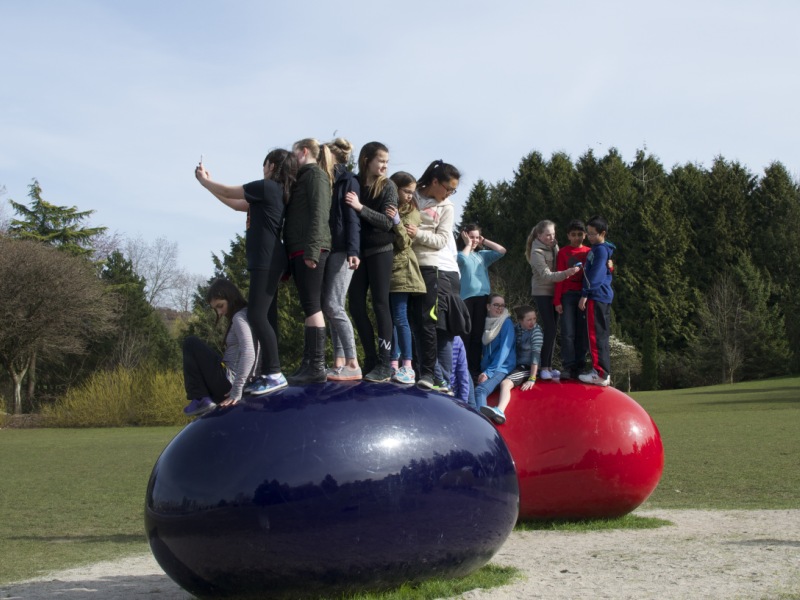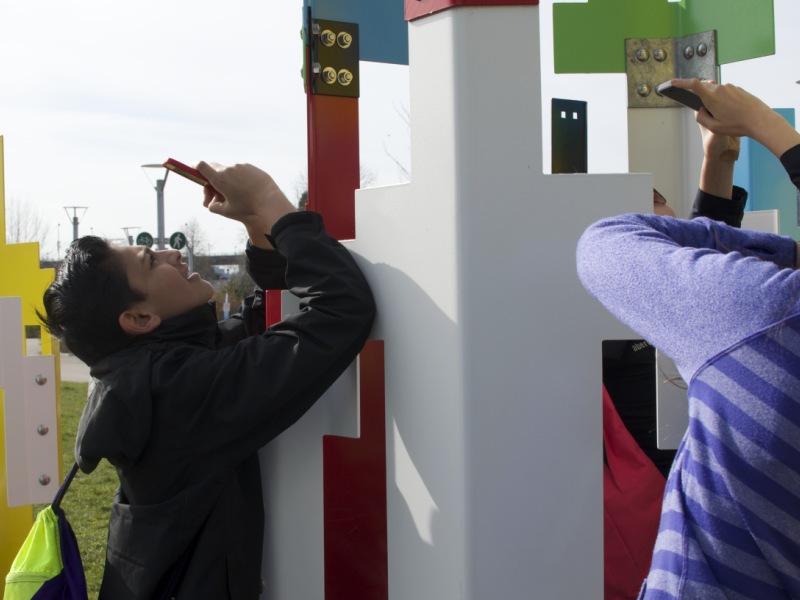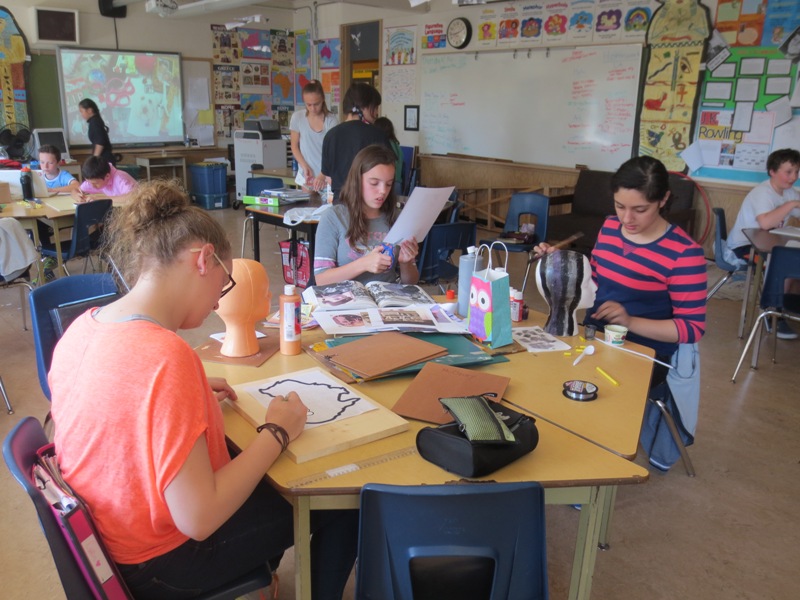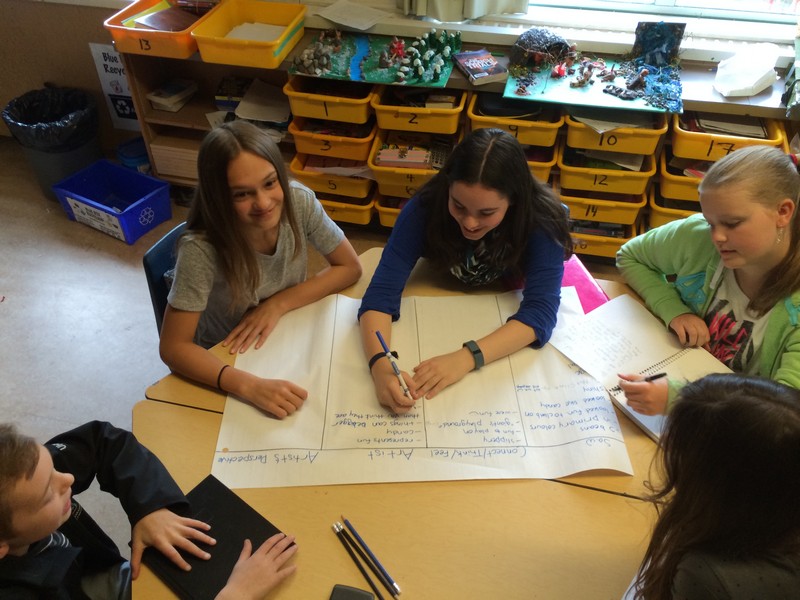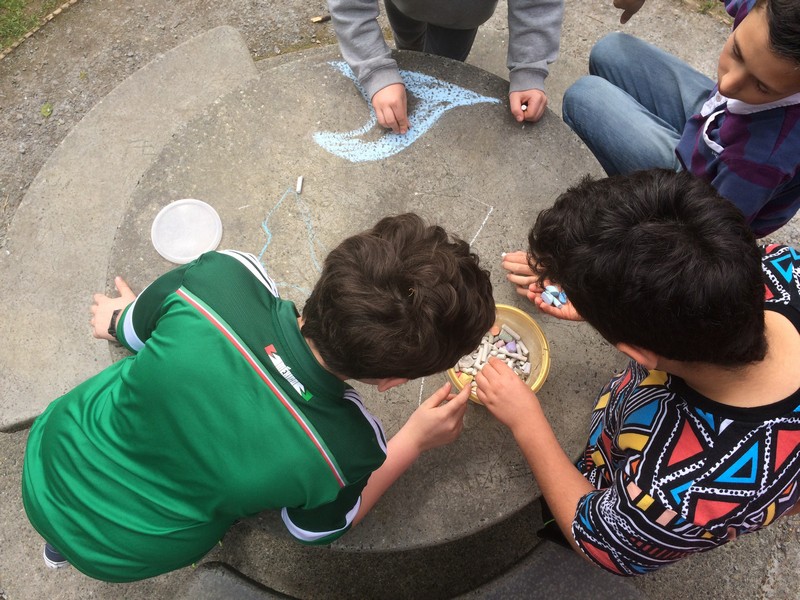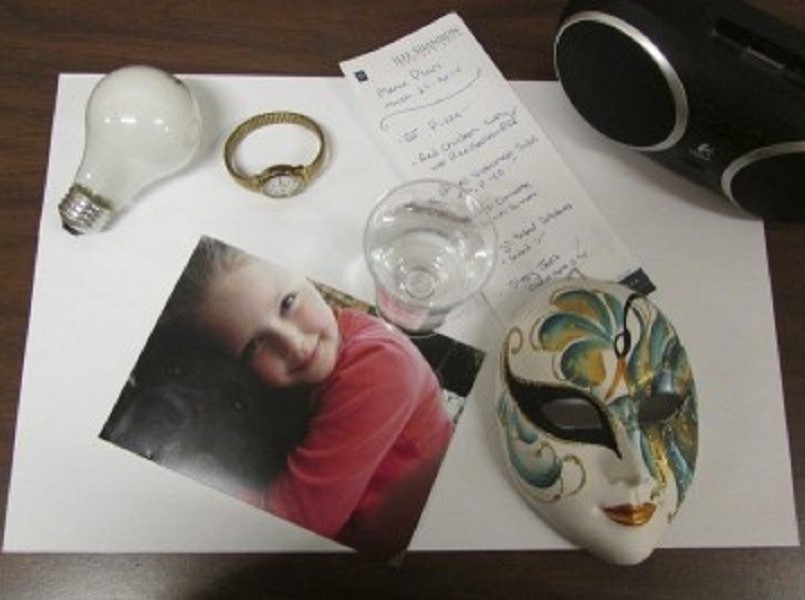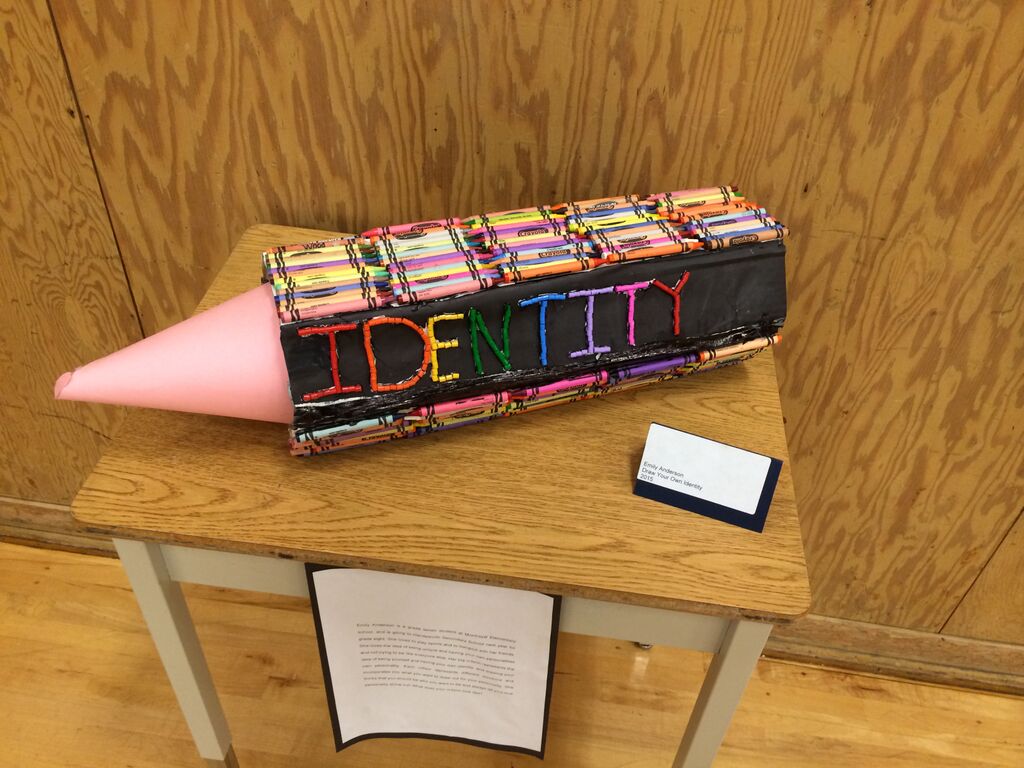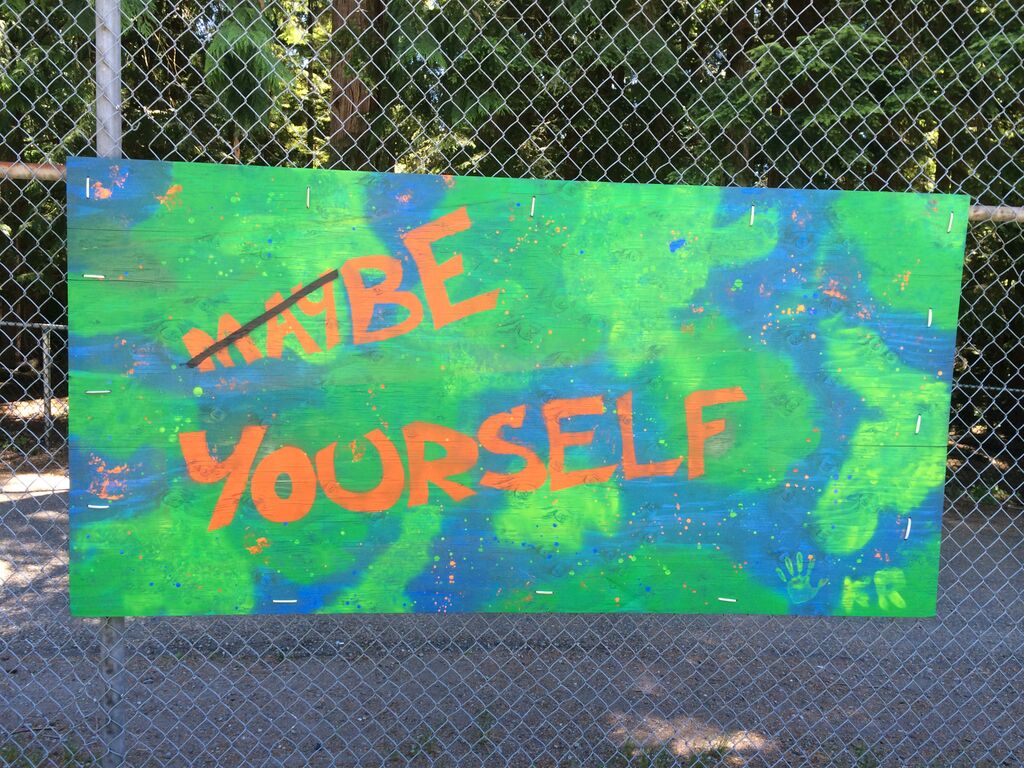Montroyal Elementary: Perspectives
Arts Education, Health and Career Education, Language Arts, Social Studies
School: Montroyal Elementary, North Vancouver
Teacher: Jeff Teed
Class: Grade 6/7
Artist Collaborator: Bronwen Payerle
Overview
Students visited and engaged with a number of Vancouver Biennale public art installations with the big idea of perspective in mind. Students pondered about the artist’s perspective and how it has been influenced by place of origin. The students also reflected on how the art represents a particular perspective and how it juxtaposes with their own.
Students then worked with the artist collaborator to device the means of creating their own art installations that represent their perspective on the idea of perspective. The students explored how perspective can be represented, how it can influence understanding, cross borders, and demonstrate unity through diversity.
Connection to the Vancouver Biennale Exhibition
The concept of perspective was considered across the curriculum by the class throughout the year. The students visited Vancouver Biennale public art installations F Grass, A-maze-ing Laughter, Engagement, Giants, Love Your Beans, and Human Structures Vancouver with the BIG IDEA of perspective in mind and to discuss the guiding questions.
In order to understand, appreciate, or tolerate another culture, another person, it is incumbent upon the parties involved to attain the perspective of the other. In this way the other no longer exists as separate, but rather is seen as one of a whole with valued difference. After visiting various installations and exploring the perspectives and home countries, students developed their own installations reflecting their own perspectives on issues that matter to them and reflect who they are.
BIG IDEAS
How perspective can be represented and how it can influence understanding, cross borders, and demonstrate unity through diversity.
Guiding Questions
What was or is the artist’s perspective and how has she put the vision across? How does that perspective fit with the students’ own view of the work? How has the artist’s place of origin informed the perspective of the creation and presentation of the work?
How can these concepts be portrayed by a figure in an artwork?
Cross-Curricular Access
The idea of perspective is intended to be a year-long consideration. The students have been considering perspective during the Health and Career unit on bullying and during the unit on goal setting and expectations. The key concept discussed is the idea of how point of view can effect results and success. How appreciating perspectives can encourage enlightenment and empathy. How understanding perspective can enable a person to make choices for success. Perspective permeates into all subject matter. The studies during science about the environment requires understanding the perspective of human needs in combination with the needs of the ecosystem as a whole. In socials, students learn about other cultures, ancient or current, and to see the perspective of the cultural experiences of other peoples. In so doing we see ourselves, we see how others may see us, and how we all need to see each other. Through the project, it fostered a continued and deeper appreciation for the concept of perspective and its influence on who we are as people in a society and our place in the world.
Learning Process/Inquiry Challenges
Students began by visiting the various installations and taking photos. They became aware of the concept of perspective and made notes on their initial perspective of the art and, after consideration, the perspective they feel the artist is presenting. Upon returning to school, students worked in small groups to research about one of the installations visited to gain insight into the creation and the artist’s ideas. Students created a Prezi about the installation they researched to present to the class. Discussion followed regarding the perspectives of the artists and how they relate to the work. Students considered how their own perspectives juxtaposed with that of the artist. The class brainstormed and created a “graffiti” activity around the three Montroyal Global Learning themes: Children of the World, World Leaders and Leadership, Global Stewardship. Students considered how they could create art and installations that feed these themes as well as issues that relate to them personally. Ideas were inspired by the art installations we see as well as work that have done in class. Art projects introduced in class included: Jackson Pollock, Andy Warhol, Banksy, and Edvard Munch. Students considered how they could take their own perspectives and a global perspective to produce an art installation. The students took these initial findings and with the help of the teacher and artist collaborator they designed and created their own art installation given the parameters of resources, time, and monies. They learned about specific techniques for creating street art including stencils, wheat paste posters, and yarn bombing. Students then created site-specific installations using found and recycled materials. The creations include graffiti art, environmental art using elements of nature or refuse, paper mache sculpture, or technological art using photos, computers, or ipads.
Student Creation
The students chose from a list of three or four collaborative final projects/actions. Within each project the students considered an element of choice in term of media or method of presentation. What can learners do to inspire and cause positive changes or actions out of this unit of inquiry? Consider community projects, individual initiatives, political or even global campaigns the students can get involved in. The project decision and actions were through a collaborative discussion between the class, the teacher, and the guest artist to initiate, debate, and mediate. The final result is an art happening where students, staff, parents, and community are invited to attend a showing of the installations. A small entrance fee was charged to funds raise to support a cause chosen by the students. The installations are also be up for sale, as decided by the students. Students collected the photos and video taken to create a presentation relating the story of Perspectives. The photos are turned into a photo album and calendar with accompanying text explain the artists perspective, their experience, and what influenced them.
Timeline
March
• Visit sculptures for inspiration and discussion
• Post-field trip – idea development
April
Through discussion and viewing images students will consider the Big Idea of Perspective, as well as being able to identify and create different Elements & Principles of Art.
Through individual and group work, students will create two works that enable them to reflect upon and respond to the Big Idea of Perspective and how it relates to “Identity”, “Culture” or “Community”.
May
Through individual process, students will create a work that reflects their idea of the Big Idea of Perspective and how it relates to “Identity”, “Culture” or “Community”.
June
Student exhibit
Reflection
Artist – Bronwen Payerle
The grade 6/7 students in Jeff Teed’s class investigated the Vancouver Biennale artworks through the lens of “Perspective”. Students considered their personal point of view, and tried to imagine other perspectives on the international installation art. Elements that informed the students’ thought included nationality and culture, social class, age and gender, as well as personal experience. After researching the installation that most interested them, students formed small groups to generate a slideshow presentation about the artwork.
Upon meeting the students and watching their informative and insightful slideshows, I showed some alternate examples of street art. We went onto the playground armed with sidewalk chalk, and the students created interventions that made passers-by stop, wonder and notice the environment in a new way. Changing our perspective on the playground was a delightful introduction to contemporary art making for the students.
Our next studio session developed two projects, a self-portrait through still life photograph, and a delicate hanging installation of paper airplanes. The photo-assemblage was inspired by the photographs by Douglas Coupland from “Souvenirs of Canada”; students were surprised and pleased to discover that they could guess the identity of many of their peers simply through seeing a collection of objects. Students created their individual perspectives by careful curation of personal items. Gu Xiong’s “Rivers” series provided us with a touchstone for the paper airplane project. Having completed some research on global energy use and each person’s carbon footprint, students tallied how many airplane trips they had each taken. Some students had taken more than 20 air trips, while a few had only 1 or 2. Each student folded paper airplanes that bore a photocopied image of themselves; one plane for each trip taken. Hanging enmasse from the ceiling of the classroom, the planes are a playful yet constant reminder of our carbon consumption. As the artist educator, I was pleased to see that the sheer quantity of airplanes was astounding to the class. They successfully made an impressive visual representation that had an impact on their thought.
The final studio sessions permitted each child to explore and express his or her ideas in a unique way. After writing a project proposal and considering my comments, each student embarked upon the technical challenges of rendering their ideas in 3-D form. The installations used a myriad of materials, but all focused on expressing an element of the student’s own personality or identity. There were many problems to overcome, both in concept and technical achievement, but the students listened well and responded to my critiques with grace. Overall, the work that was produced was filled with intention, energy and the spirit of making. Having freedom to choose both materials and precise topic was probably a frightening experience for some, but they rose to the occasion and created a class exhibit that showed their diversity and asked an audience to problem-solve.
Jeff Teed was marvellous in his simultaneous support and challenge of the students. His comprehensive teaching style, personal interest in Big Ideas Education, and willingness to adjust his day plan allowed us an easy and fruitful collaboration. I was pleased with the overall depth of the students’ knowledge after seeing the Biennale artworks, and delighted in their personal journeys to investigate and represent Perspective.
Student – Nikki Blythe
I am a student from Montroyal Elementary who was in Mr. Teed’s class for the year. We were very lucky to be able to participate in the Vancouver Biennale’s Big Ideas school program. We had lots of fun on our field trip where we toured around downtown Vancouver and Granville Island exploring and discovering different examples of public art from all around the world. We made lots of inferences on what the artist was trying to communicate to the public through their art, while considering and learning about the concept of perspective (which was Mr. Teed’s word of the year J). Afterwards we divided into groups and made an Animoto presentation on one of the installations, including how the art made us feel, the artist’s perspective, and many pictures. When Bronwen arrived at our classroom, we learned about some different types of art, including street art. We went outside into our courtyard with a bucket of chalk, and created many little drawings, which we hoped would make anybody passing by stop and think about the surroundings in a different way! We were allowed quite a bit of freedom and creativity in this, which made it very fun. In our next workshop, we were working on two projects. The first was a still life photo where each student had placed a number of objects on a piece of paper. The objects were meant to express different parts of our personality and identity, and it was quite entertaining to try and guess each other’s pictures! The next project was focusing on global warming, and airplanes. We all counted how many airplane trips we had taken in our lifetime and made one paper airplane for each trip with our picture on it. It took us a while, but we hung them all from the ceiling in our room, and they looked amazing when they were all hung, since there were so many of them! In our final session with Bronwen, we were working on our own individual art installations. We had looked at the concepts of community, culture and identity, and had each come up with a proposal, which was reviewed and commented on by Bronwen. It was a little scary to have to come up with our own ideas, concepts, and materials, but it was also lots of fun. Everyone created a 3-D installation, which expressed their own feelings, ideas, and individuality! We showcased all of our work in two gallery showings at our school. Everyone’s parents were invited, and we showed and explained all of our art installations. All of our guests seemed very impressed at the work we had done, and the big ideas that we had considered! I think that the showings were a huge success! Everyone in our class had created a very thoughtful version of their perspective on community, culture, or identity. I loved being a part of this program and learning about art and perspective. Huge thanks to Bronwen and Mr. Teed!
-Nikki J
